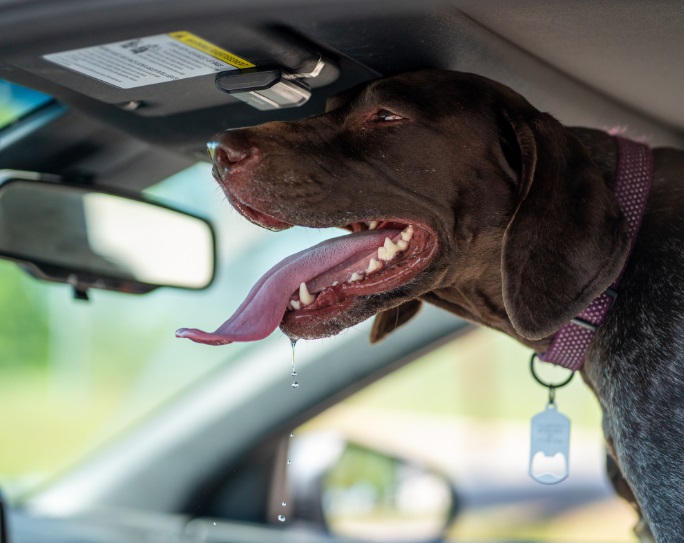Hot Vehicles and Pets: 3 ways pet sitters can address the issue
Some pet owners do not realize that even if they crack the windows or leave their automobiles running with the air conditioner on, temperatures inside vehicles can still become dangerously hot very quickly. These temperatures put pets at risk of illness, or even death.
As a professional pet sitter, you have an opportunity—and obligation—to educate local pet owners on the dangers of leaving pets in hot cars, even for just a few moments.

As a professional pet sitter, what can you do to help?
1. Understand the risks. Hundreds of pets die from heat exhaustion after being left in vehicles each year. It’s important to understand and explain to your clients that temperatures inside a vehicle can rise almost 20 degrees in just 10 minutes. After an hour, the temperature inside a vehicle can register more than 40 degrees higher than the outside temperature! The American Veterinary Medical Association (AVMA) shares a chart detailing the estimated vehicle interior air temperature v. elapsed time. Studies have also shown that cracking windows has little impact on the vehicle’s interior temperature.
2. Know how to respond. If you see a pet in a hot vehicle, what should you do? First, write down the make/model and license plate number for the vehicle. If there are businesses close by, such as a store, restaurant, workplace, etc., go in and inquire if management knows who the owner of the vehicle (and pet) may be and/or if they will make an announcement to notify the owner. If the owner cannot be identified and found quickly, contact your local animal control or use the non-emergency number to contact local law enforcement. Some states have “hot car” laws and others also have “Good Samaritan” laws in regards to those finding pets in dangerous situations. The Animal Legal Defense Fund offers a summary of variations in laws and regulations by state on its website.
3. Educate local pet owners. As a professional pet sitter, you are an advocate for your clients' pets and your local pet community. During the hot summer months (and throughout the year) look for easy, quick and affordable ways spread the word to local pet owners about the dangers of leaving their pets in their vehicles. This may include sharing articles or other informational leave-behinds at clients’ homes during your visits, sending press releases to your local media, sharing tips and warnings on your social-media pages.







Comments
No comments.